Odokorogawa Power Station
This was the day I visited Otari Village.
I drove further north from the Himekawa Bridge, which was under renovation, and came near JR Hiraiwa Station.
Hiraiwa Station is located in Itoigawa City, Niigata Prefecture. The Himekawa River is located across from Otari Village in Nagano Prefecture to the east and Itoigawa City in Niigata Prefecture to the west.
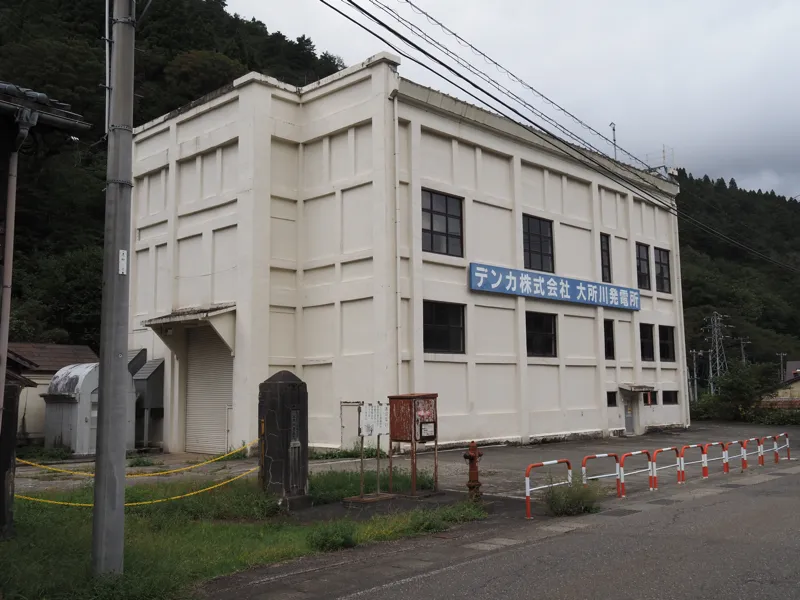
Walking north about 300 meters from Hiraiwa Station, you will find this building.
It is the Odokorogawa Power Station of DENKA Corporation. The Odokoro-gawa River is one of the tributaries of the Himekawa River.
Plans for a power station using water from the Odokoro-gawa River had been in the works since the end of the Meiji Era.
Nihon-Chisso-Hiryo Co., Ltd. (now Chisso Corporation) began construction of a waterway for a power station in December 1910. However, a major flood in the Himekawa River system in 1912 and subsequent landslides halted the construction.
In 1919, Hokuriku Suiden Co., Ltd. was established and considered restoring the waterway, but did not start work due to economic reasons.
In 1921, Hokuriku Suiden was merged with Denki Kagaku Kogyo Co. Ltd. (now DENKA Co., Ltd.) and proceeded with construction of a power station to supply electricity to the company’s Ohmi plant. It was decided to abandon the past waterway and construct a new waterway on the left bank of the Odokoro-gawa River.
Construction began in November of the same year, and a weir was constructed on the Odokoro-gawa River, a water intake was built, and a tunnel with a total length of 1,635 m was dug. From the tunnel, water is led to the power station via a water tank and a 391-m-long hydraulic iron pipeline. After power generation, water is discharged into the Himekawa River through the water discharge channel (tunnel).
Construction of the power station was completed in November 1923.
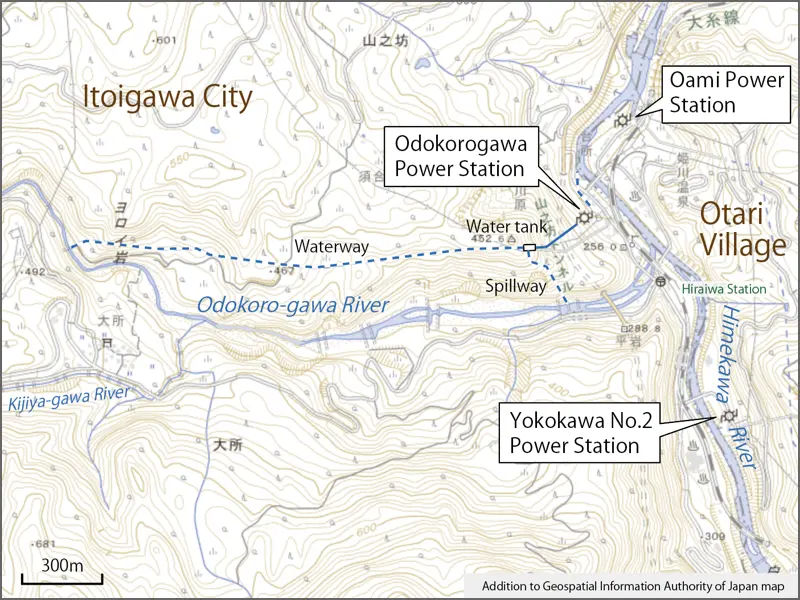
Note that all three power stations in the map are owned by DENKA Company.
Seeing an old photograph, the side walls were lined with windows, but all the side windows are now blocked.
The gateposts from when the construction was completed still remain.
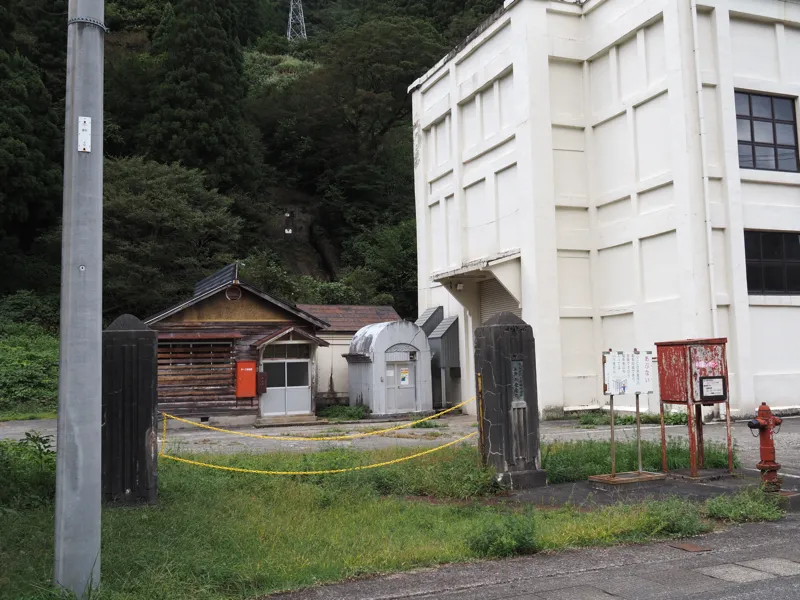
In 1933, Denki Kagaku Kogyo decided to participate in the management of Kurobegawa Power Company and invested in kind in the Osokorogawa Power Station and the Kotakigawa Power Station. As a result, the power stations became the property of Kurobegawa Power Company.
After the dissolution of the “zaibatsu" and reorganization of the electric utility industry after World War II, Kurobegawa Power Company was divided into three separate companies in 1952. (Kurobegawa Power established Kurobegawa Hydro Electric Co. and Umikawa Electric Power Co.)
Umikawa Electric Power was merged into Denki Kagaku Kogyo, and in 1953 the Odokorogawa Power Station returned to Denki Kagaku Kogyo’s ownership.
Since then, it has been owned by Denki Kagaku Kogyo until now, but in 2015, Denki Kagaku Kogyo changed its name to DENKA CORPORATION, so now the signboard reads “DENKA CORPORATION Odokorogawa Power Station”.
A gatepost that probably no one goes by anymore. It reads “Denki Kagaku Kogyo, Odokorogawa Power Station”.
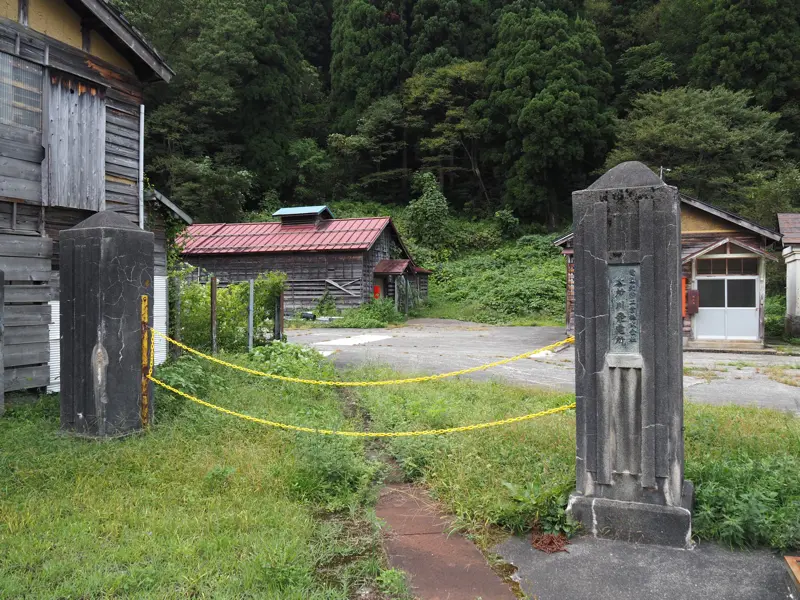
The wooden buildings in the back are probably related to the power plant, but it does not appear to be in use.
The power plant was automated in 1971 and is remotely controlled from the Oami Power Station, so no one probably enters the building on a regular basis.
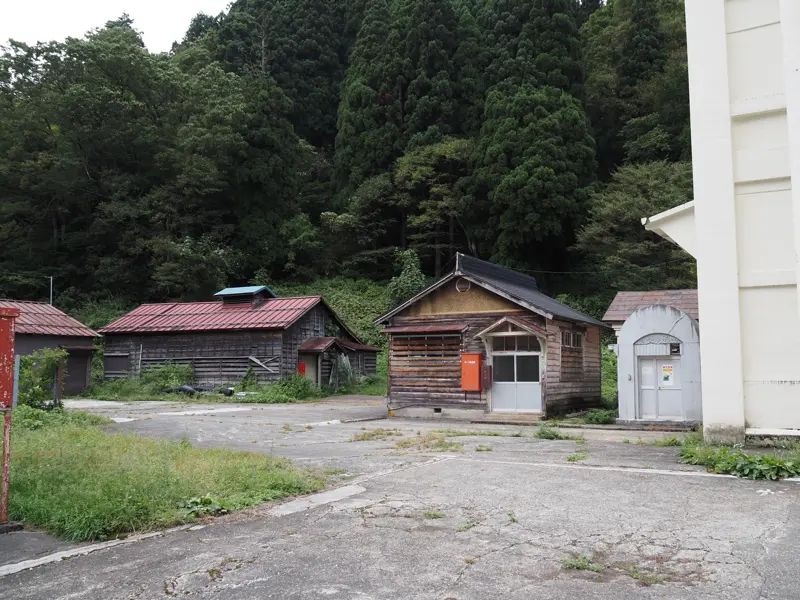
The entrance of the building has been converted to a sash, but the light pink wooden window frames were remained above it. The wall on the right also appears to have been originally painted light pink.
I wonder if this was a office or a lodging for the employees who managed the power station?
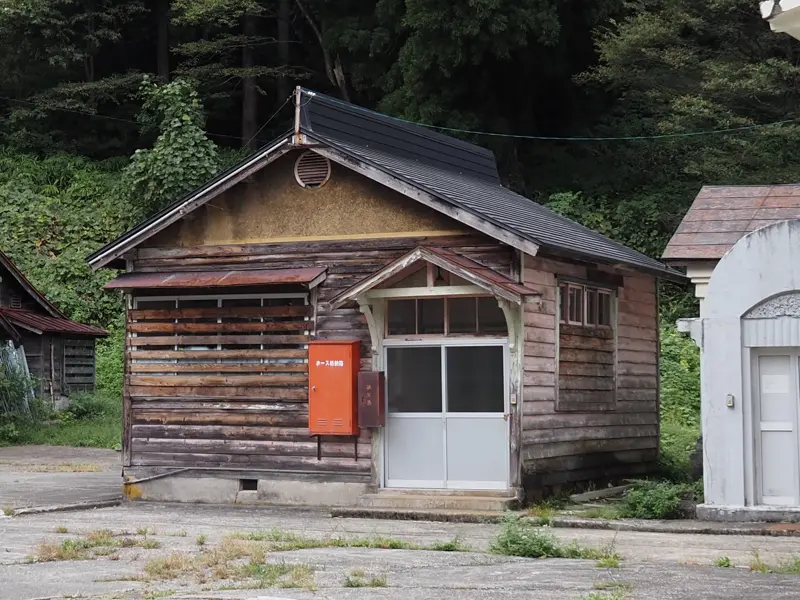
These wall parts, marked with yellow asterisks in the photo, are where the windows used to be.
I often see this at other power plants as well, but it seems that power stations these days are unmanned, so the windows are often blocked up. Is this to improve the earthquake resistance of the building?
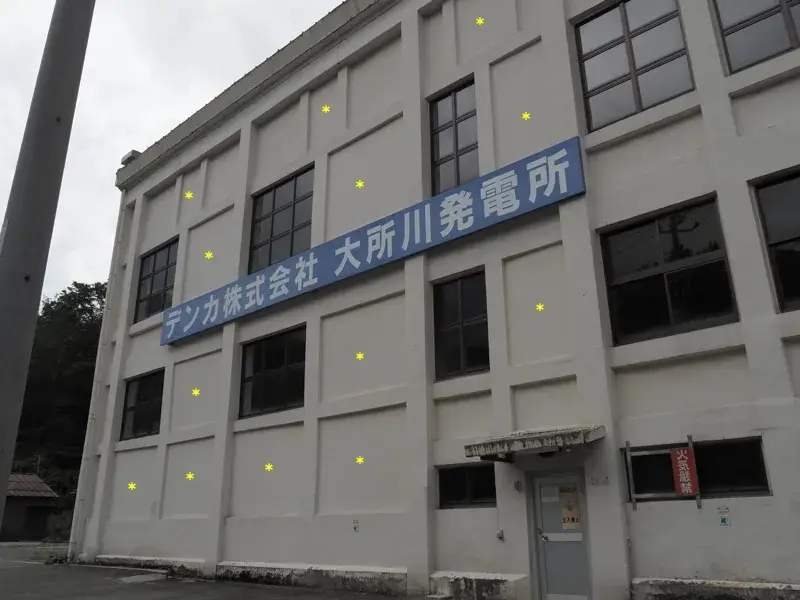
There is an off-limits sign and a fire hydrant next to the gatepost.
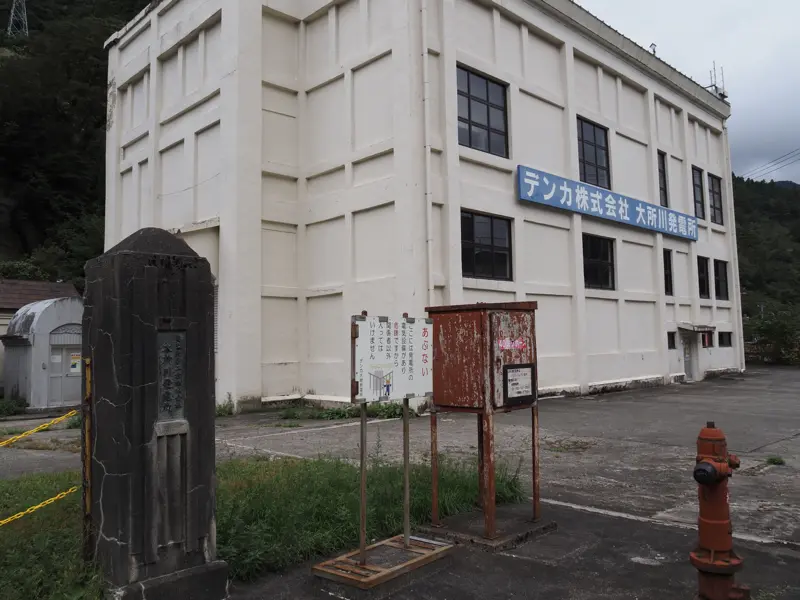
The sign reads, “Caution: There are electrical facilities at the power station here and it is dangerous, so only authorized personnel may enter. by Oami Power Station".
Since the building is unmanned, the name displayed on the warning sign is the name of the Oami Power Station.
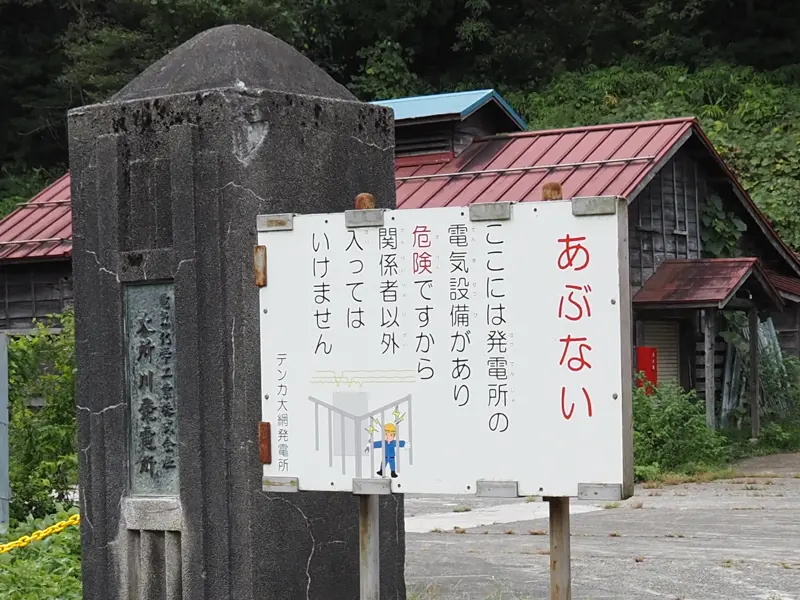
There is a substation facility on the north side of the building.
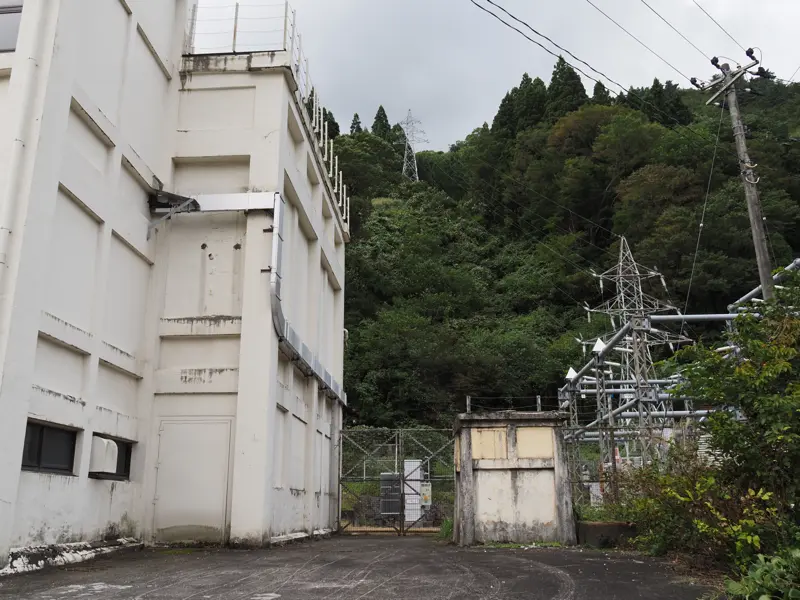
The sign seen on the lower right of the building is also a no trespassing sign. It has the same content as the sign next to the gatepost.
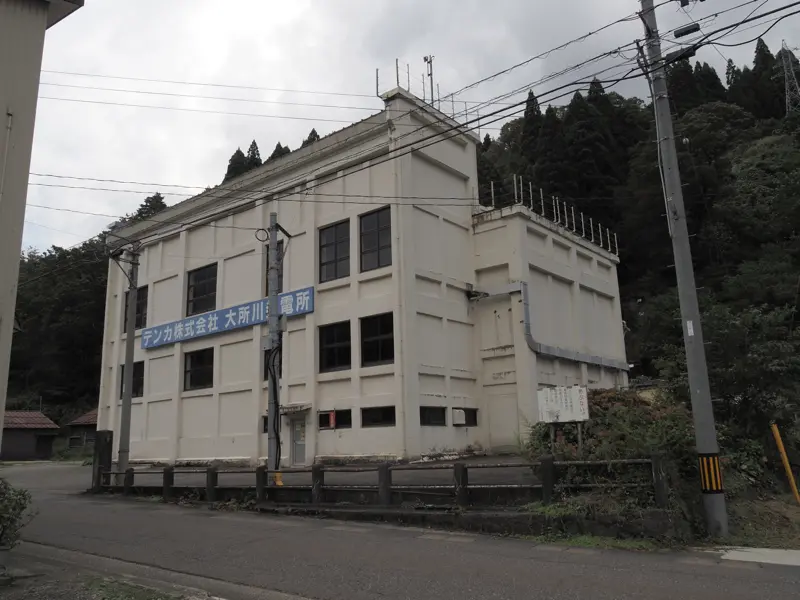
The Odokorogawa Power Station had a maximum capacity of 8,400 kW, but the output was increased in 2012 and now has a capacity of 9,800 kW. The power output has been increased by taking advantage of the abundant water supply due to the melting of snow.
The tour ended with only a look at the outside of the plant.
I will visit the nearby Oami Power Station after this tour.
(To be continued)
[Reference]
“Electrical Engineering, March issue" (Gijutsu Tosho Shuppansha/1924)
“Denka’s 60 Years History" (Denka’s 60 Years History Editing Committee / Denki Kagaku Kogyo Co., Ltd. / 1977)
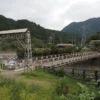
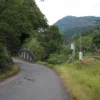
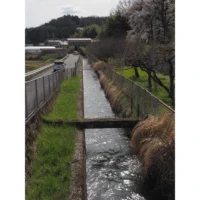
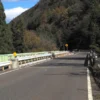
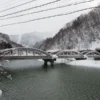
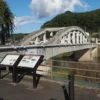
Discussion
New Comments
No comments yet. Be the first one!